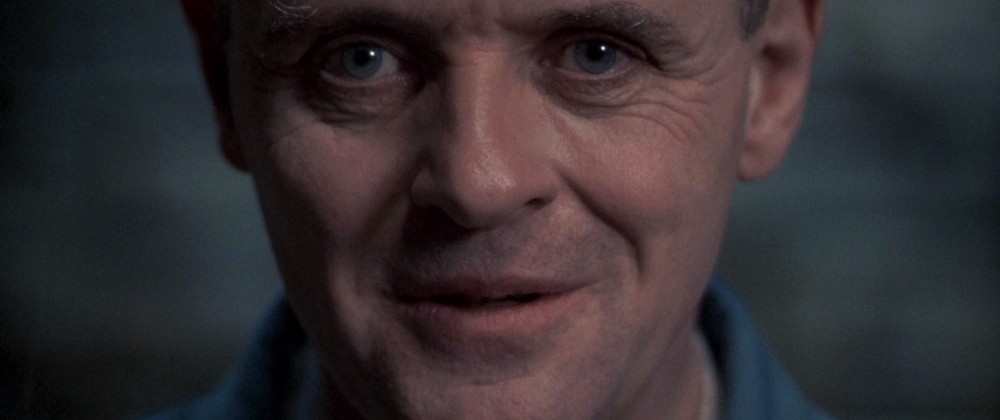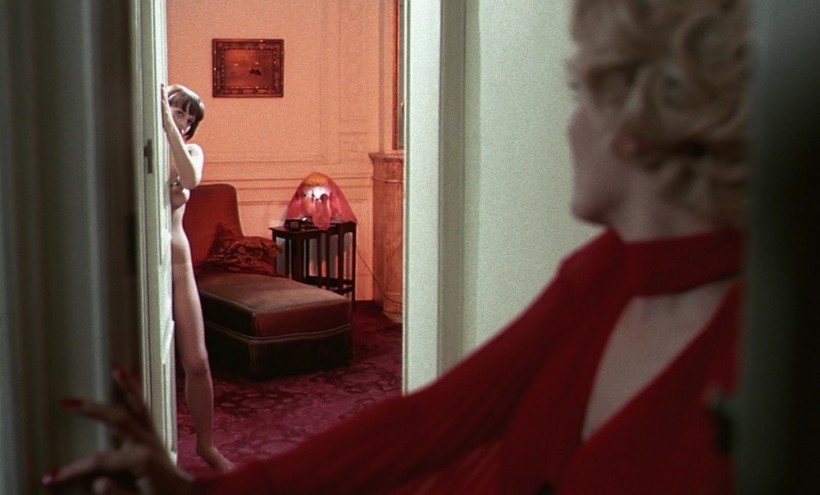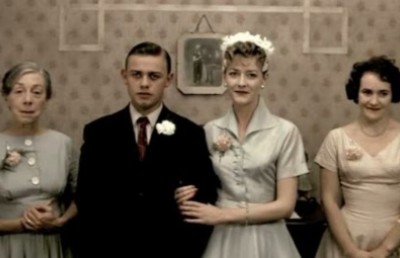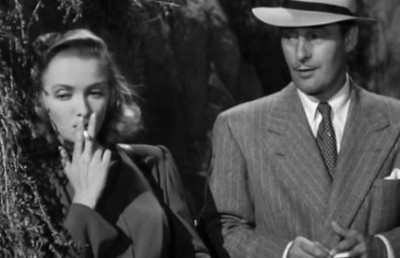‘En-gendering’ Philosophies of Horror: A Zizekian Perpsective

The gender issues pervading a range of academic discourses on the cinematic horror genre (e.g. Gelder 1994) could be approached in a novel way, if we proceed by taking a, perhaps, unexpected detour, namely a re-visiting of a controversy sparked by Noel Carroll’s seminal The Philosophy of Horror, or Paradoxes of the Heart, 1990.
Carroll’s deeply influential analysis traces the evolution of the horror genre from the Gothic novel. The Philosophy of Horror is, at its core, an attempt to unravel the co-existence of two apparently contradictory elements seen as crucial to ‘art horror’, as Carroll puts it, i.e. the literary or cinematic horror genre, as opposed to horror in real life. The title’s “paradox of the heart” concerns the way the genre-typical creation of a sense of terror tends to be combined with a paradoxical ‘repulsive lure’ of that emotion, its perverse enjoyment that has never failed to captivate successive generations of audiences. In other words, why are we simultaneously attracted to, and repulsed by, the specters ‘inhabiting’ the genre, such as vampires and other incarnations of the undead? Carroll approaches this apparent dilemma by articulating a rigorous, new aesthetics of ‘art horror’ – as a category to be distinguished clearly from other genres, such as thriller or fantasy. While his approach entails a dense web of subcategories, there remains, at core, an innovative gloss of the genre as inherently a post-enlightenment phenomenon that has as an essential condition the appearance of supernatural monsters, frequently accompanied by objects representing ‘impurity’, that persist outside of the natural order, thereby causing revulsion and/or fear. The post-enlightenment aspect is significant, insofar as the natural order disturbed by the element inducing fear is seen as having only been established by the coordinates of a reason oriented Enlightenment philosophy in the first place. By contrast, the range of —to us— implausible figures we encounter in pre-Enlightenment fairy tales or myths actually formed part of what was then considered to be the ‘natural’ order.
If Carroll’s definitions have been influential, they have also been controversial. Totaro (Offscreen 2000), for example, cites a range of films involving protagonists —or situations— that are set to elicit fear or loathing – e.g. Repulsion 1965, The Conqueror Worm 1968, The Wicker Man, Sisters 1973, The Texas Chainsaw Massacre 1974, Jaws 1975, Henry: Portrait of a Serial Killer 1986, Silence of the Lambs 1992. These are, arguably, outstanding samples of the genre, and yet they evidently fail Carroll’s criterion of a necessary supernatural aspect.
A possible way out of this impasse is offered by one of Zizek’s early works, For they know not what they do: Enjoyment as a Political Factor 1991, a volume containing a dense, tantalizing passage in which Zizek approaches the Victorian Gothic novel in terms of its underlying, ‘unspoken’, philosophical principles. Intriguingly, as in the case of Carroll, Enlightenment philosophy also figures prominently here. Zizek attributes particular significance to the fact of the Gothic novel being contemporary to Kant’s transcendental turn —i.e. his focus on the conditions of possible knowledge— which he does not consider coincidental. Indeed, he carefully proposes a theory that the spectral apparitions inhabiting the Gothic novel serve as a kind of critique avant la lettre of Kant’s claim that, for the constitution of the ontological horizon to take place —as Zizek here puts it in Heideggerian terms— the unknowable Thing must remain strictly limited to the ‘ontic’, the innerworldly realm of the subject, it must not ever ‘appear’ within physical, empirical reality. Why? It is crucial to understand that Zizek here bases his analysis, in the first instance, on Kant’s Critique of Practical Reason, and not the Critique of Pure Reason. He refers to Kant’s postulate that for the subject to retain his/her ethical integrity, he/she must not attain any direct insight into the Thing in itself —God in the case of the particular passage, a paragraph at the end of the second edition of the Critique of Practical Reason, cited— for this would convey to him/her that evil acts will be punished. Any such insight would instantly abolish any true ethics, which to Kant requires an autonomous subject deliberately engaging in ethical behavior for its own sake. Zizek proceeds to the observation that the Kantian transcendental subject, the thinking ‘I’, rooted in logical categories, is inherently empty —purely formal, or structural— so that no conceivable path exists linking the transcendental subject to (metaphysical) substance. Yet this is precisely this prohibition/impossibility, according to Zizek, which is circumvented by the monsters of the Victorian Gothic novel, which he defines as ‘Things that think’, uncanny spectral apparitions, manifestations of an inherently unknowable X —that are also endowed with reason. The implicit dramatic structure of the Gothic novel thus requires a kind of catastrophic short circuit —within the Kantian framework of ethics and apperception delineated by Zizek— whereby the Gothic Thing that thinks invades the frame of physical, empirical reality, and thus upsets its ordinary causal chain.
Zizek stresses the special significance of vampires to the Gothic tradition, citing as an example Stoker’s Dracula. The following passage involves the staking of Lucy, Arthur’s fiancée who has become a vampire. Arthur drives a stake through her heart, in order to deliver her from her undead state:
The Thing in the coffin writhed; and a hideous, blood curdling screech came from the opened red lips. The body shook and quivered and twisted in wild contortions; the sharp white teeth champed together till the lips were cut and the mouth was smeared with crimson foam (Stoker, 1988, 216) .
Thus, employing Lacanian psychoanalytical terms, Zizek identifies Lucy with the element that is excessive vis-à-vis the Symbolic, i.e. the socio-symbolic order of language, law and culture. In this reading, Lucy’s violent resistance denotes the resistance of the Thing —jouissance— to being evacuated from the body. However, once this unsymbolizable excess has been successfully ‘drained’, an expression of serene beatitude is seen to be restored to her face.
It is crucial to understand how Zizek almost imperceptibly oscillates here between two disparate conceptions of the Thing, without making this distinction explicit, namely the Kantian Thing-in-itself and the Lacanian Real. To fully grasp this distinction requires an awareness of two broadly distinct stages of Lacanian teaching: first, the “Hegelian Lacan” of the early 1950’s, who, under the influence of Kojeve, closely identified the psychoanalytical process with Hegel’s notion of the dialectical process, thus conceiving of a movement of an assimilation of the alienated, unconscious content —which expresses itself, metaphorically, in the pathological ‘symptom’— to consciousness, and secondly, the “Lacan of the Real”. The Lacan relevant to Zizek’s analysis of horror is, primarily, associated with the “Lacan of the Real”, who is focused on the traumatic kernel at the heart of the subject, an “ex-timate” stain of surplus enjoyment, in which his/her very being is condensed, yet which inherently persists beyond the symbolic order, to which it can never be fully assimilated – unlike the potentially dissolvable symptom conceived in Hegelian terms. This Lacan of the Real elaborates a theory of the relation of symbolic castration and the concomitant loss of the Thing — which, in its absence, will orient the subject’s desire— ‘by way of linking the Freudian das Ding with the Kantian Thing-in-itself’ (Zizek). Das Ding cited by Zizek here is a term that had been used by Freud to reference the subject’s ultimate object of desire, an incestuous union with the mother. It is crucial to appreciate that Lacan’s fusing of the Freudian Ding and the Kantian Thing-in-itself implies a corresponding analogy of the Lacanian symbolic order and the Kantian transcendental subject in structuring the subject’s access to reality. In other words, the Lacanian symbolic order is, at this stage of Lacan’s teaching, homologous to Kant’s transcendental screen, as both organize our access to reality, while simultaneously rendering any direct access to it —to the Kantian Thing or the Freudian/ Lacanian Ding— impossible.
Zizek’s definition of the Gothic specters as ‘Things that think’ can thus be read alternatively along Kantian or Lacanian lines: it demarcates the strictly impossible identity of the formal envelope of empirical reality (furnished, alternatively, by the Kantian transcendental subject, or the Lacanian subject of the signifier) with the underlying substance of the Real specifically excluded from this envelope. This excluded substance is either the Kantian Thing-in-itself, or the Lacanian Thing representing an excessive, forbidden enjoyment —which, if approached too closely would compromise the subject’s integration into the humanizing frame of culture.
It will pay to return, at this juncture, to our starting point: Carroll’s controversial definition of art horror in exclusively supernatural terms. It is easily appreciated how Zizek’s Kantian/Lacanian approach to (Gothic) horror can help us to resolve this dilemma. Reconsider the array of films cited above by Totaro that fail Carroll’s criterion, the existence of a supernatural dimension, yet which could, arguably, be construed as seminal samples of the horror genre. It should be evident that by relying on Zizek’s definition of (the entities of) the literary and cinematic horror genre, namely ‘Things that think’, instead of Carroll’s, we would be able to encompass these within the genre. While a Kantian perspective of the Thing can be seen to closely correlate with Carroll’s supernatural monsters —assuming that we are allowed to designate the Kantian Thing as metaphysical— the Thing conceived in psychoanalytical terms would cover both, the metaphysical monster, such as the vampire figure, and the psychotic killer or serial killer, such as Hannibal Lecter in The Silence of the Lambs, or Norman Bates in Hitchcock’s Psycho. By employing Zizekian definitions, we are able to discern the ‘red thread’, the line of continuity in the evolution of the cinematic horror genre, which would encompass traditional metaphysical specters, such as the undead, and the implicitly de-humanized figure of the serial killer, who has replaced them at certain junctures of post-WW2 cinema.
An excellent example illustrating this continuity would be the quasi-mythical status of Hannibal Lecter in the cinematic Silence of the Lambs series, played by Anthony Hopkins. This figure does not represent a metaphysical evil, in any narrow meaning of the term. Nonetheless he appears not to pertain to empirical reality, insofar as he cannot be grasped as a ‘subject’ to the Other qua socio-linguistic order. Rather, he emerges as an embodiment of a nameless, obscene excess of the Symbolic —the Thing— jouissance luxuriating in his acts of slaughter and cannibalism. We sense a psychotic foreclosure of the Symbolic, an absolutely inhumane dimension, constituted by a transgression of one of the ultimate taboos informing any civilized culture. We clearly apprehend Lecter’s proximity to the register of the Real, for example, when, at one point, as he is not only absolutely immobilized, but additionally also equipped with his famous iron mask, there is nonetheless a sense that his murderous presence is potentially ubiquitous. At this point, the fear he evokes reminds the Lacanian theorist of a myth invented by Lacan himself, in order to designate that, which is in principle unnamable, the ‘undead’ monstrosity of the libido, the Real of the death drive persisting beyond the ontological horizon delineated by the Symbolic. Lacan called his mythical creation the ‘Lamella’. According to Lacan: “The lamella is something extra-flat, which moves like the amoeba…. And it can run around. Well! This is not very reassuring. But suppose it comes and envelopes your face while you are quietly asleep…” (Lacan, Four Fundamental Concepts).
The ironic twist of the cinematic Silence of the Lambs series, of course, consists in the fact that the brute onslaught of the Real, which lies at its core, is irrevocably bound up with the intellectual brilliance of Lecter. In other words, Lecter emerges as a classical ‘Thing that thinks’ defining the genre, according to any Lacanian/Zizekian perspective. Thus, underneath Lecter’s intellectual brilliance, there is an ominous, ‘undead’ excess, quite similar to the one that shines through in passage from Stoker cited earlier.
While a Zizekian definition of the horror genre therefore seems to represent a definite advance over the more restrictive approach adopted by Carroll, Zizek’s psychoanalytical view of vampires has not been entirely uncontroversial. In Reading the Vampire, Ken Gelder follows Zizek’s elaborations on the Gothic ‘Thing that Thinks’ in Enjoyment as a Political Factor, as delineated above. He does acknowledge the value of a Lacanian reading focused on non-ideological, non-metaphoric ‘excess’, and on the uncanny. However, Gelder reveals himself to be, finally, dissatisfied with Zizek’s point of view: Zizek is deemed to navigate somewhat too close for comfort to a predictable Freudian reading of the vampire figure as a manifestation of the uncanny, i.e. a return of the familiar that has been rendered unfamiliar by repression. Secondly, commenting on Zizek’s Stoker quote relating the staking of Lucy by Arthur, Gelder notes that not all vampires exhibit such a violent resistance as they are being vanquished. Many, like Dracula himself, turn to dust quietly, he notes. Thirdly, and this is the core of Gelder’s concern, there is an apprehension that to Zizek, ‘all vampires are the same’, so that, he alleges, his analysis does not take account of the meaning of differences in their gender or sexual orientation. According to Gelder, not only Zizek himself, but the bunch of Slovenian Lacanian philosophers —Copjec, Dolar and Zizek— do to not sufficiently address the issue of sexual difference in their reading of the vampire myth. In this way, their approach is deemed to cement a conservative, hegemonic view of sexual relations as inherently heterosexual relations, so that sexuality is normalized, signified along the differential poles ‘normal’ and ‘deviant’. According to Gelder:
Certainly, Copjec had looked at sexual distortions in Dracula, turning to the scene in which the Crew of Light break into Mina’s bedroom and see her sucking the blood from Dracula’s breast, but by viewing this as a ‘distortion’, ‘normalization’ is allowed to recover…..(Gelder, 57)

Daughters of Darkness
In contrast to the analysis of the vampire figure by the Slovenian Lacanian school, deemed to be non-sensitive to issues of sexual orientation, Gelder aims at recovering the queer subtext in vampire fiction ranging, amongst others, from Sheridan Le Fanu’s Carmilla, to Stoker’s Dracula, Byron’s vampire narratives and Polidori’s The Vampyre.
Zizek has not himself responded to Gelder, but he has addressed charges that closely resemble Gelder’s, such as Judith Butler’s, who has criticised Zizek’s and Lacan’s view of the genealogy of sexual difference. Indeed, in Contingency, Universality and Hegemony, (2000), a work they co-authored with Ernesto Lacau, Butler and Zizek directly face off on this and other related issues. The ramifying intricacies of this intellectual match transcend the scope of this essay, but a few essential aspects of the debate between Zizek and Butler can be summarized in broad brushstrokes: Butler repudiates the notion of any underlying a priori ‘fixing’ one’s gender, which, she maintains, is identifiable not only in biologistic conceptions of gender held by social conservatives, but also in Lacan’s notion of the symbolic register as a fundamentally self-referential system of signification to which the infant subject is forced to accede to via the primordial imposition of the pure difference of the phallic signifier, i.e. the signifier of symbolic castration that signifies nothing but difference as such, and as such functions as the condition of the sexually differentiated, social subject. Butler believes that this formalistic notion of the founding of sexual difference during infancy entails a false —since implicity ahistoric— conception of gender identities as being rooted in an priori. However, in the view of Butler et. al., gender identities do not pertain to any abstract subject of culture, such as the Lacanian subject of the signifier, suspended in a particular relation to the Real, but depend on the distinct rituals of performativity in the specific, empirical culture into which one is socialized, e.g. Christianity. Gender in this view is held to emerge in the wake of the historically grown set of norms and proscriptions organizing a culture, dominating it, and accordingly, to lack any universal, cross-cultural, essence. Zizek addresses this charge, the accusation that an implicitly ahistorical Lacanian ontology of sexual difference implicitly serves to stabilize the “hetero-normativity” of the Western Christian tradition, in Interrogating the Real:
The notion of sexual difference that underlies the formulae of sexuation in Seminar XX is strictly synonymous with Lacan’s proposition that ‘there’s no such thing as a sexual relationship’. Sexual difference is not a firm set of ‘static’ symbolic oppositions and inclusions/exclusions (heterosexual normativity that relegates homosexuality and other ‘perversions’ to some secondary role), but the name of a deadlock, a trauma, an open question – something that resists every attempt at symbolization. Every translation of sexual difference into a set of symbolic opposition(s) is doomed to fail and it is this very ‘impossibility’ that opens up the terrain of the hegemonic struggle for what sexual difference will mean. What is barred is not what is excluded under the present hegemonic regime (Zizek, 2005, 298/299).
Fortunately, Zizek further elaborates on this dense passage, resorting, first, to a vivid example from Levi-Strauss’ structural anthropology, and secondly to a more intuitively accessible aspect of Lacanian/Marxist theory, namely the political division of society, its split into a left and right (Zizek, 2005, 300-303). According to Zizek, the political left and right do not encounter each other ’on the same level’, their antagonistic positions do not conceive of the same social totality, i.e. they do not agree on a neutral conception of the social whole as the common ‘field of reference’. Rather, the political struggle manifests, precisely, a fundamental incongruence in the way the social totality is viewed: the right tends to see the social ‘body’ in pseudo-biological, naturalistic (i.e. ethnic), or organic terms as an originally harmonic unity threatened by corruption from the outside that needs to be defended accordingly, while on the left, the Marxist notion of class struggle implies that society is from the beginning, i.e. structurally, or inherently, split, divided into a ruling and a dominated class –a concept typified by the idea that history as such is the history of class struggles. However, in order to be able to conceive of the political “arena” at all, logic demands that one posit a reference point to which both sides refer. According to Zizek, this common reference cannot be the “neutral arbiter” of society —given that the different sides have fundamentally different visions of it— but rather a traumatic ‘pure difference’ constituting a kind of primordial wound of the social order. Adopting a term from Levi-Strauss, Zizek labels this primordial difference a “zero-institution”, a constitutively ungraspable X which unifies the left and right, insofar as they forever “overdetermine” this open question through their particular, political stances. In other words, in the field of the political, pure difference precedes the empirical differences between any two fundamental positions/oppositions (left/right etc.)
Thus the Lacanian meaning of sexual difference also becomes clear: sexual difference persists as a pure, traumatic, original difference, a traumatic X that lies at the base of all of its concrete, empirical manifestations. Sexual difference as a “zero-institution” thus opens up the very space in which the social and political struggles over its meaning take place. Suffice it to consider the sets of differential poles “normal-deviant” and “vanilla-BDSM” that imply different, indeed mutually exclusive, approaches to setting up the framework through which one views sexual culture. Thus, according to Lacan/Zizek, gender is neither rooted in a biological essence, as social conservatives tend to believe, but neither is it simply a ‘virtual’ social construct, as Butler et. al. hold. Rather, sexual difference, “the name of a deadlock, a trauma, an open question”, far from possessing a positive ontological consistency, designates an original traumatic failure. However, this very failure functions as the origin and condition of all contentious debates about gender.
As Zizek constantly keeps repeating, to sate that sexual difference is ‘impossible-real’ is homologous to stating that “there is no such thing as a sexual relationship”. The next step is to show that this Lacanian conception of sexual difference is linked, not superficially but rather inextricably, to the uncanny Thing(s) inhabiting the cinematic horror genre. One is tempted to invoke here, in a first move, Harry Kümel’s aesthetically accomplished, vividly colour-coded vampire movie Daughters of Darkness, a suggestive film —the semantic “surplus” here frequently depends upon a subtle dialectic of the gaze— which carries not only strong lesbian, but also considerable sadomasochistic overtones. Indeed, the character development of one of the male (mortal) protagonists who is drawn under the spell of the female vampire is portrayed as a kind of emancipatory sadomasochistic journey of self-discovery. In terms of the Lacanian theory of gender outlined above, it is unsurprising that the movie was shot in 1971, the time, precisely, of a self-confident political assertion of a variety of alternative modes of sexual identity, which formed part of the wider social, political and cultural struggle against the conservative establishment.
Even a rather cursory look at Zizek’s approach to a number of non-Vampire horror movies across his oeuvre will demonstrate how deeply aware he is of link between the horror inducing Thing(s) that think on the one hand, and the traumatic issue of sexual difference underlying everyone’s subjectivity. This in turn means that Gelder’s view of Zizek’s alleged gender indifference in his psychoanalytic reading of horror is in need of revision.
Consider first Zizek’s analysis of Hitchcock’s The Birds in Looking Awry. Zizek approaches this film by engaging in a thought experiment that honours an aspect of its cultural context which is often overlooked, namely a veritable flood of American films and stage plays in the 50’s and 60’s that center on an isolated male individual somehow unable to form any lasting sexual relationship with the opposite sex, usually because of a possessive mother lingering somewhere in the background. Against this backdrop, Zizek re-imagines Hitchcock’s The Birds, with its plot essentially unchanged, but without the eponymous animals. In this way, he imaginatively transforms the movie into a relationship drama typical of the times, with Mitch unable to form any deeper bond with Melanie because of his possessive mother, with whom he shares his parental home in Bodega Bay near San Francisco. Following this initial set-up, he then allows birds to be introduced from time to time as a signifier, a symbol of the maternal superego blocking Mitch’s relation to Melanie. While noting that this new, imagined scenario would certainly be consistent with the relationship dramas of the period, he asserts that Hitchcock’s actual movie does not function that way: the utterly mysterious, and increasingly vicious and deadly attacks of the birds persist beyond the network of causal chains that inform our everyday, rational apprehension of reality, and it is this that situates them outside of the domain of symbolic representation. Accordingly, their inexplicable intrusions are seen by Zizek to manifest the impossible-real, in the same way as other entities —Things that think— populating the horror genre. In other words, the birds do not symbolize the maternal superego but literally embody it on the level of the Real, materializing the inherent deadlock of the sexual relationship —in this case the one between Mitch and Melanie (Zizek, 1992, 104-106) .
Zizek’s reading of Tarkovsky’s Solaris, which can be subsumed under the genre of sci-fi horror, may serve as another point of departure for viewing the link between the traumatic Thing to the constitutive structural flaw of the sexual relation: In Tarkovsky’s film, according to Zizek, the eponymous planet Solaris itself represents a gigantic ‘Thing that thinks’. Solaris is covered with an ocean that possesses a consciousness, its density and gravity curving the symbolic space of the narrative. Vis-à-vis the film’s key protagonists, scientists inhabiting a space station hovering above the planet, the phantasmatic object of the planet functions as an ‘id machine’, a point where the registers of the Symbolic and the Real are conflated, so that the protagonists’ deepest unconscious traumas and desires are directly realized. With regard to the film’s hero, Kris Kelvin, a psychologist recently sent to the station, the trauma that he is forced to confront concerns the suicide of his wife Hari, which has etched an indelible stain of guilt at the core of his pyche. Hari appears, literally ‘materially’ embodied, on the space station, where she relates to him with an attitude towards him that is understanding, even loving, a selflessness that is embodied in the fact that she repeatedly tries to commit suicide, to rid him of her traumatic presence. The repeated failed suicides that drive Kris to the edge demonstrate that her presence has a spectral, ‘undead’ quality comparable to the persistence of the symptom in psychoanalysis, which one cannot easily get rid of, as its source is inscribed into the very fabric of the unconscious.
Consider the concluding scene of Tarkovsky’s film depicting Kris kneeling in front of his father, in an attitude of reconciliation and spiritual communion. The film’s implicit anti-feminist ideology can be elucidated by considering Sex and Character by Otto Weininger —a contemporary of Freud who committed suicide at the age of 24. In that work Weiniger elaborates a theory of woman which denies her any ontological consistency of her own, that reduces her to a mere embodiment of man’s sin. This conception carries the implication that the best approach for a man wishing to rid himself of “woman” is to purify his desire, rather than simply destroy her. Zizek notes that the late Lacan’s dictum that “woman is a symptom of man” resonates with Weininger’s reactionary, anti-feminist approach (Zizek, 1992b, 154-156) and, in The Thing from Inner Space (1999) reads the developments in Solaris as evidence that Kris has simultaneously purified his desire and realized his ‘immaculate’ spiritual self.
So, far from supporting any notion that Zizek conforms to the Christian Western tradition of “hetero-normativity”, his look at Tarkovsky’s Solaris only confirms his profoundly pessimistic, negative ontology of sexual difference.
In his attempt to explicate the Lacanian notion of the Real as pure drive, or as, respectively, the phantasmatic left-over of life force that has escaped subjection to the symbolic order, Zizek’s recurring reference point has been —apart from the Lacanian mythological invention of the lamelle cited earlier— the monster from the Alien series, which he sometimes even uses as a synonym of the Real. In The Parallax View, he takes his cue from Stephen Mulhall, who identifies this monster from the Ridley Scott movie not, in the first instance, as an imagination of a particular species, exerting its fascination through its exotic otherness, but primarily of life as such, as “a nightmare embodiment of the natural realm, understood as utterly subordinate to, utterly exhausted by, the twinned Darwinian drives to survive and reproduce” (Mulhall 2001, p.19). Noting that “this disgust at Life is a disgust at drive at its purest” (Zizek 2006, 118), Zizek proceeds to point out that Scott departs, here, from the usual semantic encoding of evil nature as female, noting that the alien exerts a brutal, male, phallic penetrative power frequently parasitizing on the female body in order to reproduce. Consider how, by contrast, Zizek identifies the traumatic Thing in the films of David Lynch with the figure of woman, “the point of simultaneous attraction and repulsion, which stands for the vortex of Life itself threatening to draw us into its depressive abyss” (Zizek, 1996, 75).
To Zizek, the connotation of the monster of the alien series as a penetrative, ‘male’ force is closely connected to what he regards as an anti-capitalist edge of the series: the ultimate threat to the lone group of space travelers thus does not appear to consist in the aliens as such, but rather in the nebulous, creepy Corporation back on earth, which wants to exploit them for profit. Zizek concludes his deliberations on the Alien series in The Parallax View by closely identifying the psychological dynamics that, to him, form the “flesh and blood” of the narrative with what he considers to be the key to capitalism itself, its inexorable tendency to “parasitize and exploit the pure drive of Life”.
According to Zizek:
Pure Life is a category of capitalism. If, as Benjamin asserted, capitalism is actually, at its core, a religion, then it is an “obscene” religion of the undead, spectral life celebrated in the black masses of the stock exchanges” (Zizek, 2006, 118) .
Bibliography
Butler, J, Laclau, E., Zizek, S, 2000, Contingency, Hegemony, Universality: Contemporary Dialogues on the Left, London:Verso.
Carroll, N., 1990, The Philosophy of Horror, or Paradoxes of the Heart, New York: Routledge.
Gelder K., 1994, Reading the Vampire, London: Routledge.
Mulhall, S., 2001, On Film, London:Routledge
Totaro, D., 2000, “To Scare or Not to Scare”, Offscreen. Vol. 4, Issue 1, January 2000.
Zizek, S, 2006, The Parallax View, Cambridge: MIT Press.
Zizek, S. 2005, Interrogating the Real, London: Bloomsbury Academic.
Zizek, S., 1999, The Thing from Inner Space.
Zizek, S., 1996, The Indivisible Remainder: An Essay on Schelling and Related Matters, London: Verso.
Zizek, S. 1992a, Looking Awry; An Introduction to Jacques Lacan through Popular Culture, Cambridge: MIT Press.
Zizek, S., 1992b, Enjoy your Symptom: Jacques Lacan in Hollywood and Out, London: Routledge.
Zizek, S., 1991, For They Know not What They Do: Enjoyment as a Political Factor: London: Verso.
Zizek, S., Philosophy: Spinoza, Hegel, Kant and…Badiou!













